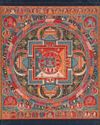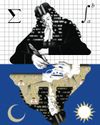
E. M. Forster’s friends tried more than once to persuade him to publish “Maurice.” The novel, which he wrote when he was thirty-five, moldered in a drawer for decades afterward, with a note attached that read, “Publishable. But worth it?” In other words, was it worth the risk to career, friendships, and family for someone with his literary reputation and social standing to publish a novel whose main character was an “unspeakable of the Oscar Wilde sort”? “I am ashamed at shirking publication,” he told Christopher Isherwood, “but the objections are formidable.” One friend put it to him that the French writer André Gide’s memoirs made no secret of his homosexuality. “Gide hasn’t got a mother,” Forster replied ruefully.
He meant, of course, a living mother, to be shocked and anguished by the revelation. But the death of Forster’s mother made no difference. Formidable new objections arose, concerning the risks to the reputation of Bob Buckingham, the manly policeman who was Forster’s almost-lover for many years. As the Freudians have long told us, the real censor isn’t so much the flesh and-blood mother as the one inside. Meanwhile, cowardice is good at masquerading as prudence or social responsibility or simple kindness. Whatever will the neighbors think? What about the children? And what will it do to poor Mama?
Denne historien er fra January 23, 2023-utgaven av The New Yorker.
Start din 7-dagers gratis prøveperiode på Magzter GOLD for å få tilgang til tusenvis av utvalgte premiumhistorier og 9000+ magasiner og aviser.
Allerede abonnent ? Logg på
Denne historien er fra January 23, 2023-utgaven av The New Yorker.
Start din 7-dagers gratis prøveperiode på Magzter GOLD for å få tilgang til tusenvis av utvalgte premiumhistorier og 9000+ magasiner og aviser.
Allerede abonnent? Logg på

MEAN TIME
“Hard Truths.”

ENLIGHTEN ME
The secret beauty of mandalas.

THE BEST OF THEM
His was a genius for the ages. Will Gottfried Leibniz ever get his due?

DEATH CULT
Yukio Mishima’ tortured obsessions were his making—and his unmaking.

Prophecy
The night of Dev’s twenty-second birthday, he was invited to sit with the elders after dinner.

A TALE OF TWO DISTRICTS
Lauren Boebert and Colorado’s red-blue divide.

THE TIKTOK TRAIL
Andean migrants draw others to the U.S. with videos depicting themselves as living the American Dream.

LOVE AND THEFT
Did a best-selling romantasy novelist steal another writer's story?

OUR NEW TWO-FACTOR AUTHENTICATION SYSTEM
Our two-factor authentication system is expanding because text messages and e-mailed codes are becoming less secure. Also, we’re committed to making sure your log-in process is more of a hassle than it needs to be.

STILL PROCESSING
Why is the American diet so deadly?